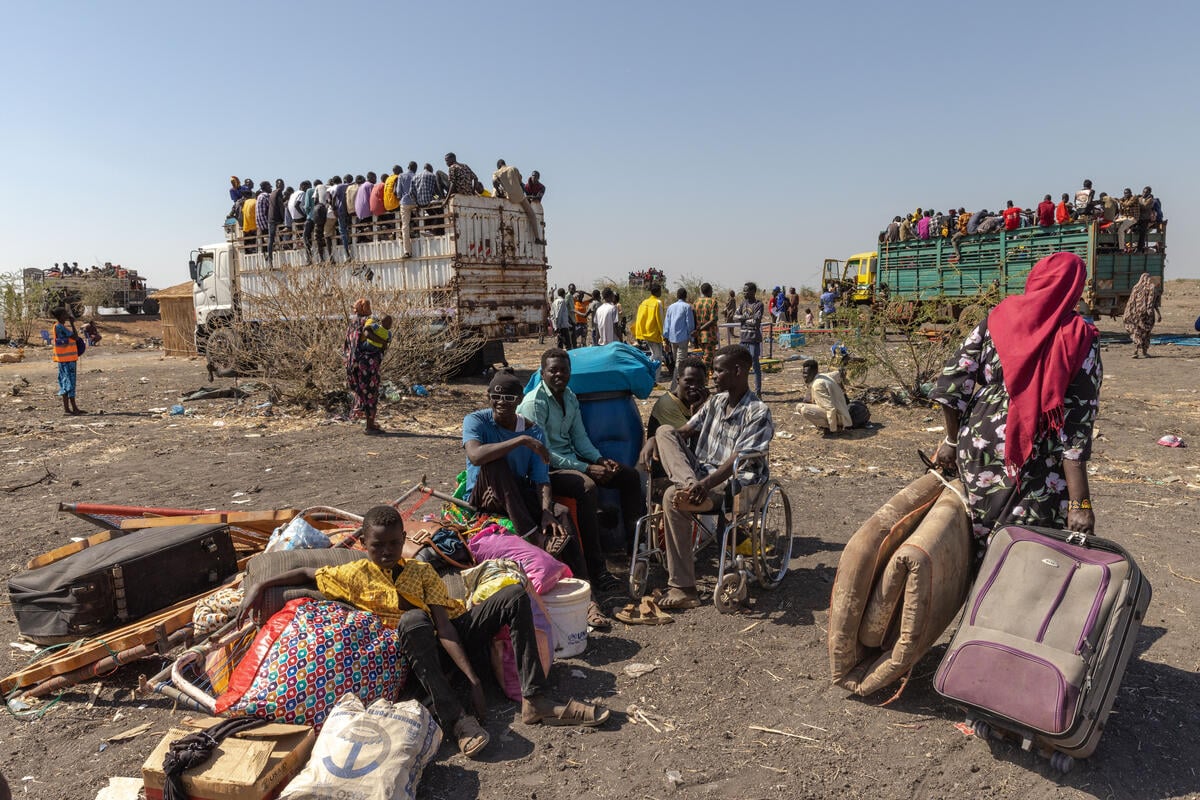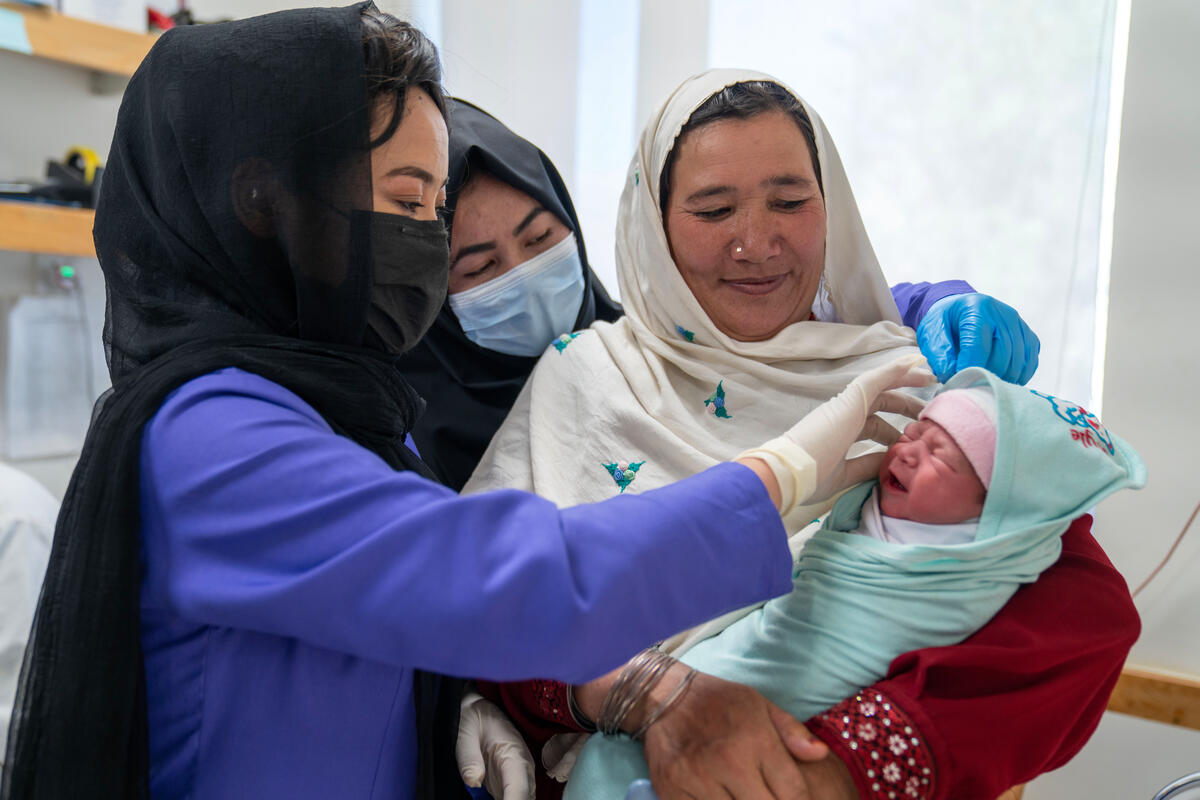Afghanistan Humanitarian Update No. 23
Afghanistan Humanitarian Update No. 23
At a Glance:
- Situation at Pakistan's Chaman border calmer Tuesday
- UNHCR is preparing a temporary staging site in Pakistan, 2 kms from the Chaman border, for the most urgent needs of vulnerable Afghans
- Second Iranian Red Crescent Society camp reportedly operating inside Afghanistan
- $19 million in urgently needed cash contributions received; less than two-thirds of initial needs met
- First airlift flight for UNHCR's operation in Turkmenistan
Situation at Pakistan's Chaman Border
A UNHCR team at Pakistan's Chaman border crossing today (Tuesday) reported the situation as calm as of midday. Some 400 people, many of them women, were still seen waiting on the Afghan side of the border. Some 300 Afghan refugees were reportedly allowed to cross into Pakistan by mid-afternoon. Another group of 300 women and children, who were refused entry throughout the day yesterday (Monday), were reportedly finally allowed to cross last night.
The border remains officially closed. People are still crossing, however, through unofficial crossing points, often having to pay local smugglers to help them across. They are leaving Afghanistan with their remaining belongings and household goods. Every day, donkey carts, trucks and minivans overloaded with belongings and people make the trip down the winding mountain road leading from Chaman to Quetta town. Other families trek through the Khojak hills on foot in order to avoid security checkpoints on the road.
UNHCR and its partners are working today (Tuesday) to prepare a temporary staging site about 2 kms from the Chaman border where we can provide for the urgent humanitarian needs of the most vulnerable cases entering from Afghanistan. These would include women, mothers, children, the elderly, the disabled and those in need of medical attention. Work is now underway at the site, Killi Faizo, including erection of tents and pre-positioning of humanitarian supplies. About 1,000 people could initially be helped at Killi Faizo. It is viewed as a temporary humanitarian measure to help with the most urgent needs of vulnerable people arriving from Afghanistan.
By mid-day Tuesday, refugees were coming forward, having heard about the new site for vulnerables.
UNHCR has already pre-positioned supplies at Chaman. Two trucks arrived at Chaman Monday with 300 tents, 2,400 blankets, 600 stoves, 1,000 plastic tarpaulins, 2,000 bars of soap, and 963 jerry cans. More convoys will follow during the week.
In the meantime, work continues on two longer-term sites about 20 kms from Chaman - Roghani and Tor Tangi - which will have a total combined capacity of 50,000.
North-West Frontier Province
In Pakistan's North-West Frontier Province, UNHCR teams continue trying to locate and interview newly arrived Afghans. Over 6,500 individuals have been interviewed so far, mainly in urban areas. Identifying and speaking to new arrivals is complicated by the fear of deportation that prevails among the refugees. The teams have to make repeated visits to each area to build confidence among these groups.
So far, the teams' findings indicate that the western and northern parts of Peshawar seem to have particularly large concentrations of new arrivals. The Afghans are in poor health condition and face problems getting food, shelter and accessing proper sanitation facilities. Many arrived with no belongings, having left everything behind in Afghanistan. Despite the huge solidarity among the Afghan population in Peshawar, the absorption capacity of the local refugee community seems to have been reached.
As another indicator of the growing Afghan population, public institutions and services in Peshawar - including schools, hospitals and bakeries - are noticing a marked increase in demand since September, with some 20% to 30% more clients.
Meanwhile, two of the new sites in NWFP are now ready - one in Bajaur agency and one in Mohmand agency.
Iran
The situation on the Iran-Afghan border remains calm, with no reports of large-scale population movements. There are, however, indications that people may be massing in Afghanistan's Nimroz province in the vicinity of the town of Zaranj, near the Iranian border. A few new arrivals in Iran, interviewed by UNHCR's team in the border town of Zabol, reported that approximately 1,200 people have arrived in Zaranj from other provinces in Afghanistan since Thursday.
Iranian authorities and the Iranian Red Crescent Society (IRCS) have begun operating a second camp inside Afghanistan. The second site, called "Makaki", is located in the Taliban-controlled area in Nimroz province, two kilometres from the border. According to authorities in Iran's south-eastern province of Sistan-Baluchistan, the provincial government reached an understanding with the local Taliban structures regarding operations in the camp. There are reportedly some 600 people in the camp (100 families). Of the 120 tents set up at the site, 100 are already occupied.
At the other camp inside Afghanistan, "Mile 46", there are reportedly 544 people (123 families). The site is located seven kilometres inside Afghanistan, in a pocket controlled by the Northern Alliance forces. So far, 220 tents have been put up, and families are currently living in 120 of them. Medical screening and basic health assistance is conducted by the staff of the Iranian Ministry of Health. New arrivals receive canned food for the first three days. Once provided with cooking facilities, they also receive rice, tea, oil, cereals and sugar.
There is no change in the Iranian government's stance regarding the border, which remains closed. However, the government has confirmed that as long as there is no overall agreement with the Taliban authorities on IRCS operating camps in Taliban-controlled territories, Iranian authorities will accept camps in the no-man's land along the border. UNHCR has been told by Afghans on the border that they would not feel safe in a camp inside Afghanistan, or in the no-man's land, due to frequent banditry in the area and fear of forced recruitment by the Taliban. For the moment, it seems that local Afghans are deciding to remain in their villages as long as they are not faced with severe food shortages.
Meanwhile, spontaneous returns to Afghanistan continue uninterrupted. UNHCR's team at the Dogharoun border crossing in Iran's north-eastern Khorasan province reports that 952 people returned on Monday. From Thursday through Sunday (Oct. 18-21), 1,208 people returned to Afghanistan. Interviews show certain patterns among the returnees - most of them have stayed in Iran for less than a year, they came to Iran to earn some income (mostly in the construction sector), and most were not registered in the Iranian government's registration exercises this past Spring.
Funding
UNHCR has received more than $19 million in additional cash contributions over the weekend and Monday. The US contributed $10 million, Germany $4.4 million, Australia $1.9 million, the European Commission Humanitarian Aid Office (ECHO) contributed $1.8 million, Finland $722,213 and Luxembourg $341,451.
The new funds bring total cash contributions to over $31 million to date. This still represents less than two-thirds of the needs ($50 million) for the first phase of the operation.
Airlifts
The first flight for UNHCR's operations in Turkmenistan is scheduled to arrive today (Tuesday) in Turkmenabat. The flight, donated by Switzerland, carries 11,000 blankets, 1,700 tents, 3,600 kitchen sets, 550 stoves, 800 sleeping bags, 200 mattresses, 500 water containers and plastic sheeting.








